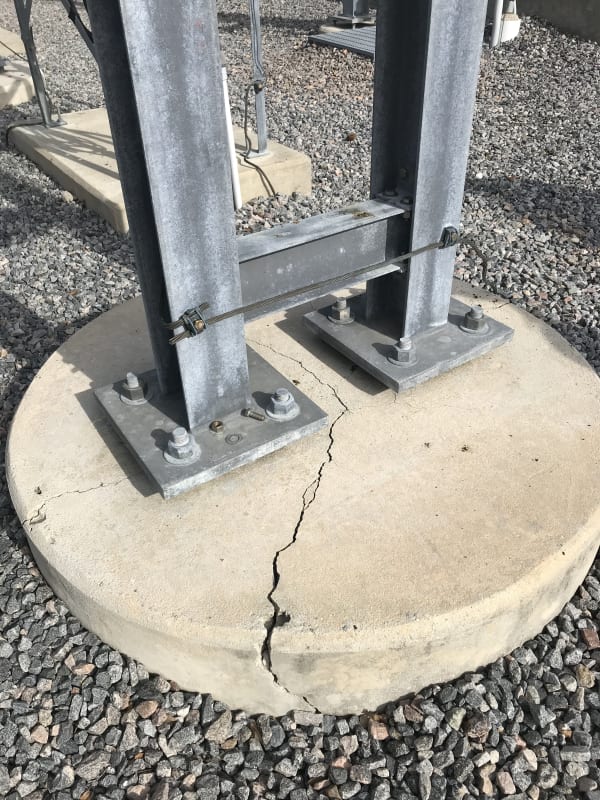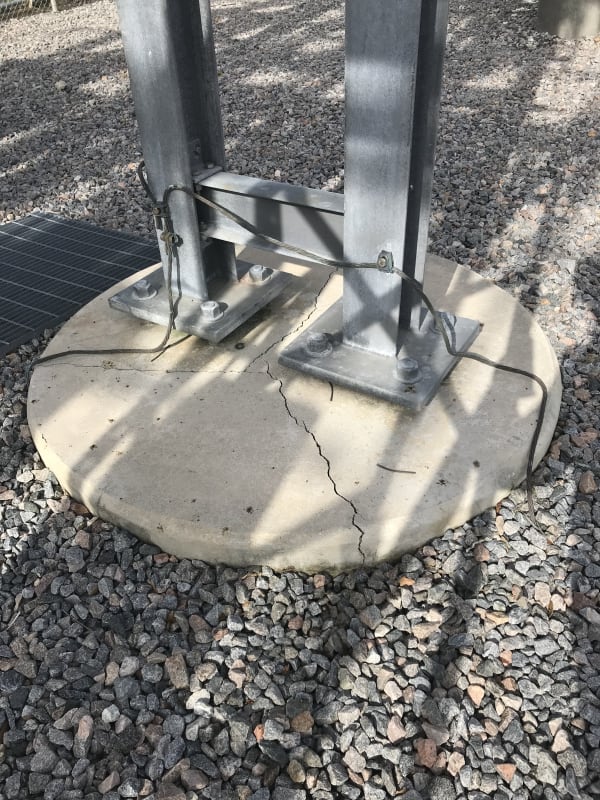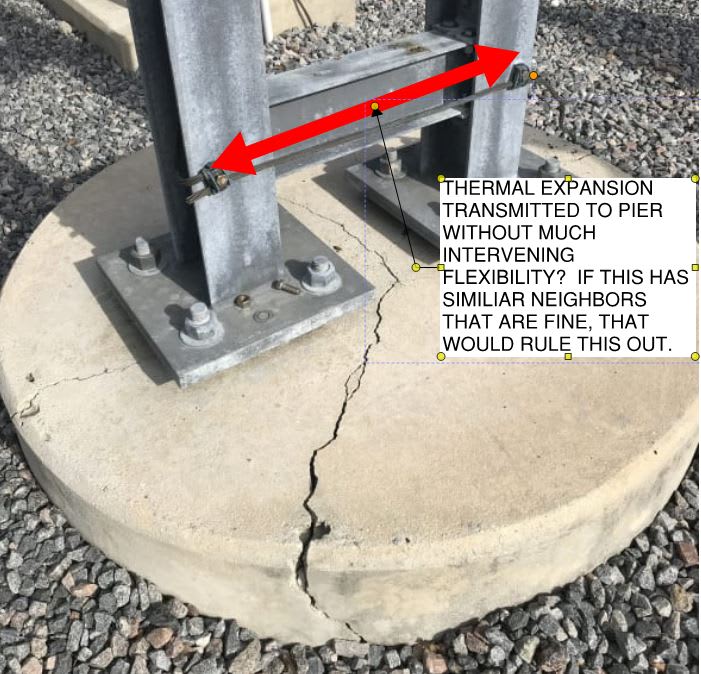acer49
Structural
- Jan 28, 2013
- 17
What can cause this type of cracking? My first guess is lack of adequate shear reinforcement or some eccentric loading based on the anchor bolt/column configuration. The piers were constructed in 2009 and designed by someone else. Piers are 5'-0" in diameter with #4 ties at 12" O.C. vertical reinforcement is (8) #7 rebar equally spaced.
Also, have no concrete pour data, break reports, foundation specifications, or soil data available.


Also, have no concrete pour data, break reports, foundation specifications, or soil data available.



